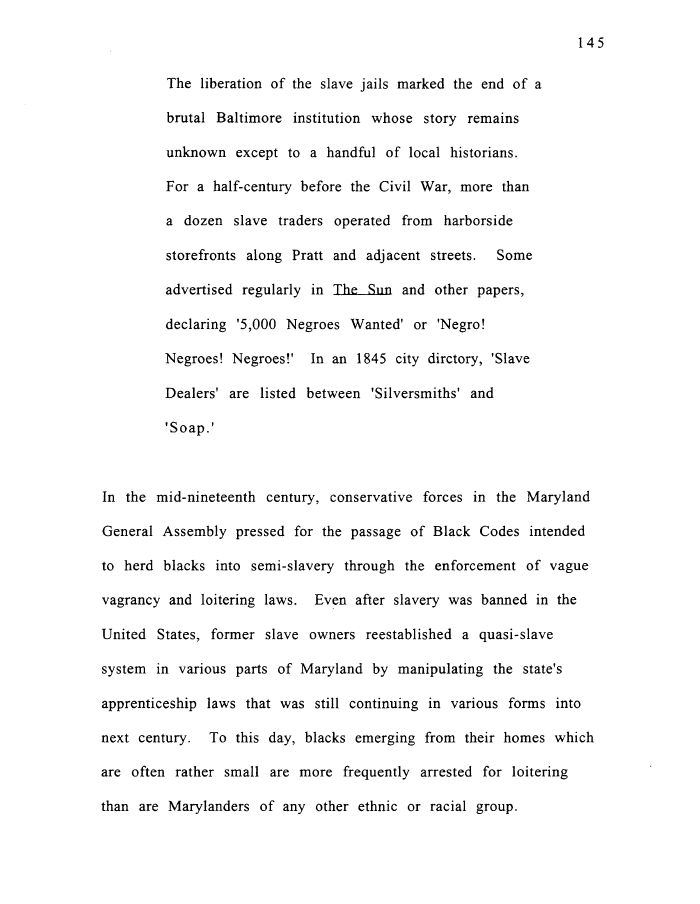 |
||||
|
TASK FORCE TO STUDY THE HISTORY AND LEGACY OF SLAVERY IN MARYLAND (Final Report) 1999/12/31 MdHR 991422 MdHR 991422, Image No: 154 Print image (37K) |
 |
||||
|
TASK FORCE TO STUDY THE HISTORY AND LEGACY OF SLAVERY IN MARYLAND (Final Report) 1999/12/31 MdHR 991422 MdHR 991422, Image No: 154 Print image (37K) |
| 145 The liberation of the slave jails marked the end of a brutal Baltimore institution whose story remains unknown except to a handful of local historians. For a half-century before the Civil War, more than a dozen slave traders operated from harborside storefronts along Pratt and adjacent streets. Some advertised regularly in The Sun and other papers, declaring '5,000 Negroes Wanted' or 'Negro! Negroes! Negroes!' In an 1845 city dirctory, 'Slave Dealers' are listed between 'Silversmiths' and 'Soap.' In the mid-nineteenth century, conservative forces in the Maryland General Assembly pressed for the passage of Black Codes intended to herd blacks into semi-slavery through the enforcement of vague vagrancy and loitering laws. Even after slavery was banned in the United States, former slave owners reestablished a quasi-slave system in various parts of Maryland by manipulating the state's apprenticeship laws that was still continuing in various forms into next century. To this day, blacks emerging from their homes which are often rather small are more frequently arrested for loitering than are Marylanders of any other ethnic or racial group. |